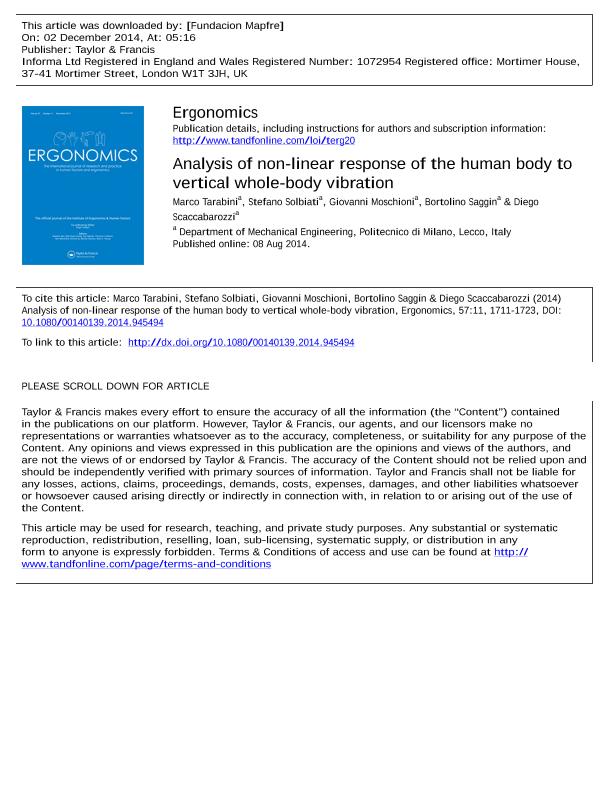Analysis of non-linear response of the human body to vertical whole-body vibration

Contenido multimedia no disponible por derechos de autor o por acceso restringido. Contacte con la institución para más información.
| Tag | 1 | 2 | Valor |
|---|---|---|---|
| LDR | 00000cab a2200000 4500 | ||
| 001 | MAP20140045600 | ||
| 003 | MAP | ||
| 005 | 20141203104158.0 | ||
| 008 | 141202e20140311esp|||p |0|||b|spa d | ||
| 040 | $aMAP$bspa$dMAP | ||
| 084 | $a875 | ||
| 245 | 0 | 0 | $aAnalysis of non-linear response of the human body to vertical whole-body vibration$cMarco Tarabini...[et.al] |
| 520 | $aThe human response to vibration is typically studied using linear estimators of the frequency response function, although different literature works evidenced the presence of non-linear effects in whole-body vibration response. This paper analyses the apparent mass of standing subjects using the conditioned response techniques in order to understand the causes of the non-linear behaviour. The conditioned apparent masses were derived considering models of increasing complexity. The multiple coherence function was used as a figure of merit for the comparison between the linear and the non-linear models. The apparent mass of eight male subjects was studied in six configurations (combinations of three vibration magnitudes and two postures). The contribution of the non-linear terms was negligible and was endorsed to the change of modal parameters during the test. Since the effect of the inter-subject variability was larger than that due to the increase in vibration magnitude, the biodynamic response should be more meaningfully modelled using a linear estimator with uncertainty rather than looking for a non-linear modelling. | ||
| 773 | 0 | $wMAP20100019818$tErgonomics : the international journal of research and practice in human factors and ergonomics$dOxon [United Kingdom] : Taylor & Francis, 2010-$x0014-0139$g03/11/2014 Volumen 57 Número 11 - noviembre 2014 |

